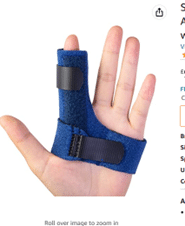What is the treatment?
Trigger finger may get better without any treatment. Try reducing the strain on this joint, and avoid activities that cause pain.
Pain relief
Medication (such as simple painkillers or anti-inflammatories) may be useful. A pharmacist or your GP can help advise you what to take if needed. You can find further information here on what medications you could take here:
How and when to take paracetamol for adults – NHS (www.nhs.uk)
Ibuprofen for adults: painkiller which also treats inflammation – NHS (www.nhs.uk)
Ice or heat therapy
You may find heat helpful to ease stiff and painful joints. Try filling a bowl with warm water or resting your hand on a microwaved heat pack for 10 minutes. Do not use heat if your joint is hot and swollen as it may make it worse. Instead you can consider using an ice pack or bag of frozen peas.
Place a tea towel on your wrist (to protect your skin from ice burns), and then place an ice pack or bag of frozen peas over the painful area. Leave this on for ten minutes and use up to 3 times per day.
- Please be cautious using ice if you have altered sensation or circulatory problems.
- Check the skin regularly, and stop if there is excessive pain or tingling.
Hand Exercises
General movement of the hand and thumb can be beneficial to maintain range of movement and prevent stiffness.
Splinting
 Sometimes wearing a splint at night may help to relieve the symptoms. A hand therapist can fit a splint for you if they feel this will help, or you can source one of these yourself like the one pictured below.
Sometimes wearing a splint at night may help to relieve the symptoms. A hand therapist can fit a splint for you if they feel this will help, or you can source one of these yourself like the one pictured below.
If your symptoms do not resolve, speak to your healthcare practitioner. A hand therapist may be able to help. They can help advise you as to the best management of your trigger finger and provide you with an individual tailored programme. They may make a splint to wear during the day if your symptoms are more severe.

 Sometimes wearing a splint at night may help to relieve the symptoms. A hand therapist can fit a splint for you if they feel this will help, or you can source one of these yourself like the one pictured below.
Sometimes wearing a splint at night may help to relieve the symptoms. A hand therapist can fit a splint for you if they feel this will help, or you can source one of these yourself like the one pictured below.